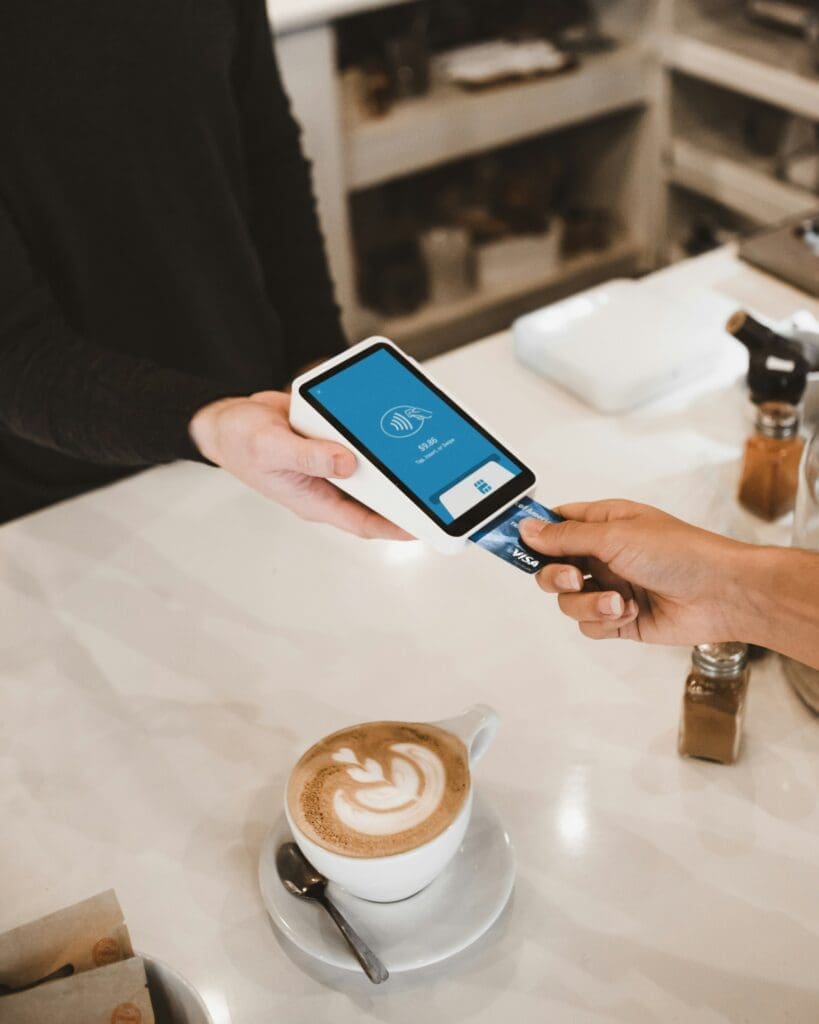How To Stand Out – Understanding the Buyer’s Journey

Imagine you’re thinking of replacing your car with a new one. You’ve just started thinking about what kind of car you might want, when a sales representative for a major car brand knocks on your front door and says he can put you in a brand new SUV for only $600 a month. Do you sign the paperwork?
Of course not. It would be insane for a salesperson to even approach you so early on in the process — you’re obviously not ready to commit to a purchase when you’ve just started looking — but online, the equivalent of this interaction happens every day. Whether it’s through promotional emails, banner ads, or sponsored social media posts, today’s consumers are bombarded with marketing messages that simply come off as pushy and annoying.
The mistake these marketers are making is that they aren’t considering the buyer’s journey. The buyer’s journey is the process that any person goes through on their way to making a purchase, starting with the very first time they realize that there’s a problem that they’d like to solve. Here’s why you should care.
A Quick Primer on the Buyer’s Journey
First, a quick refresher on what the buyer’s journey looks like. It’s generally laid out in three stages:
- Awareness: this is the stage at which the customer realizes that something is wrong in their lives, but doesn’t yet have a clear sense of what they need in order to solve it. They’re researching symptoms and questions to try to get a clearer sense of how to proceed.
- Consideration: your future customer has narrowed down what the problem is and is now looking into how to solve it. They’re starting to compare their options and the various methods for solving the problem at hand.
- Decision: the shopper has decided how they want to solve their problem and is looking for the vendors and products that can do it. They’re now directly comparing various products and services, their features, and their prices.
Let’s take a simple example, using laundry detergent. In the awareness phase, the customer has noticed an irritating film showing up on their dark-colored clothing after they wash it. They start searching for things like “white film on clothes” and find out that it could be any number of things: high mineral content in their water, stubborn stains, or residual detergent, among others.
In the consideration phase, the customer has concluded that the problem is their detergent, but isn’t sure how to solve it. Are they using too much detergent? Should they be using hotter water? Do they need a new detergent altogether?
When they reach the decision stage, Your future customer has conclusively decided that the quality of their detergent is to blame. They need a new detergent, and they need it soon. During this stage, they’ll start conducting web searches for things like “film free detergent” and “detergent that doesn’t leave a stain.” With some luck and some clever marketing, they’ll pick you.
Defining Your Buyer’s Journey
As you can imagine, the buyer’s journey for something like laundry detergent looks very different from the buyer’s journey for something like a car or enterprise-level payroll software. The basic stages are the same, but the questions, concerns, and research at each stage will completely depend on what kind of business you’re in.
Just as we did with the detergent example above, you need to lay out what the buyer’s journey looks like for your particular company and product. You might even want more than one if you have several different products with different price points or feature sets. Here’s where to start.
Awareness Stage
The awareness stage is the point where buyers are identifying the challenges and opportunities they want to look into, in addition to deciding how important those challenges are. The same problem might be an immediate, pressing concern for some people, while it’s a far-off stretch goal for others. Ask yourself:
- What are your buyers’ goals and problems?
- How do your buyers do research into their goals and problems?
- What’s at stake if your buyer decides not to address the problem?
- Are there myths or misconceptions about addressing the problem?
- How are your buyers deciding how important the problem is?
Consideration Stage
In the consideration stage, your future customer has defined the problem and, importantly, they’ve made a clear decision to address it. You’re no longer trying to convince them to find a solution, you’re showing them that you have one. Think about:
- What are the possible solutions to your buyers’ problem?
- What are the pros and cons of each solution?
- How are buyers deciding between the possible solutions?
Decision Stage
By now, buyers have picked a category and are evaluating the competition in that category to see which specific product or company is the best fit for them. You won’t be the best fit for every customer, and that’s ok — the goal is to find the customers you’re best able to help. Ask:
- What criteria are customers using to choose a product?
- When buyers look into your product, what stands out above your competition? When they look into your competition, what stands out above your offering (be honest)?
- Are there multiple people involved in making this decision? How do their perspectives differ?
- Do potential customers expect to be able to try the product before they pay for it?
- Are there additional steps besides a simple purchase, like implementation or training?
These questions aren’t all-encompassing, but they’ll give you a good jumping-off point for building a buyer’s journey that anticipates exactly what questions and concerns your potential customers might have.
Why the Buyer’s Journey Matters
So why go through all this trouble to read your customers’ minds? Think back to our car salesperson example from the very beginning. If you’re not meeting your customers at the right stage in their journey, you’re wasting your efforts. That’s why car salespeople wait for you to come to the lot — once you’re there, chances are good that you’re in the decision stage of buying a car and they can pitch to you accordingly, including financing options and a test drive to sway your decision.
The same is true for any product and any customer. Some journeys are shorter than others but, regardless of the length of the journey, the same principles always apply.
Create Unique Content for Each Stage
Knowing what your buyer’s journey looks like also grants you the ability to craft your content for every phase of your customer’s decision-making process, helping to nudge them along the journey and toward making a decision.
In the awareness phase, focus on establishing yourself as an authority in the field and planting your brand name in their minds. When they do decide to act, they’ll think of you first. Focus on blogging, search engine marketing, and social media marketing that will simply get your content in front of curious eyes.
In the consideration stage, you need to show your visitors why your product is the best fit for their problem. You should also be showing potential customers why they might not be a good fit. Spending your time and energy trying to sell to a customer who doesn’t actually want your product is a waste of both your and their time, and convincing them to purchase something they don’t need will only lead to higher churn rates down the line.
The decision stage is where you break out the big guns — pricing, comparing your features to those of your competition, free trials, special offers, email marketing, product demonstrations, and so on. Your goal is to show potential customers not only that you can solve their problem, but that you’re the best option to do so.
Standing Out From the Crowd
Every business and every product will have a different buyer’s journey. You’ll have to experiment when creating your own buyer’s journey to hone in on the things that are most important to your users.
Regardless of who you are or what you are selling, the approach is roughly the same. Your goal is to understand your audience, their problems, their needs, and how to address them. Developing a strategy that both identifies those problems and demonstrates that you’re the best suited to solve them will build stronger relationships and loyalty with those who encounter your brand.





